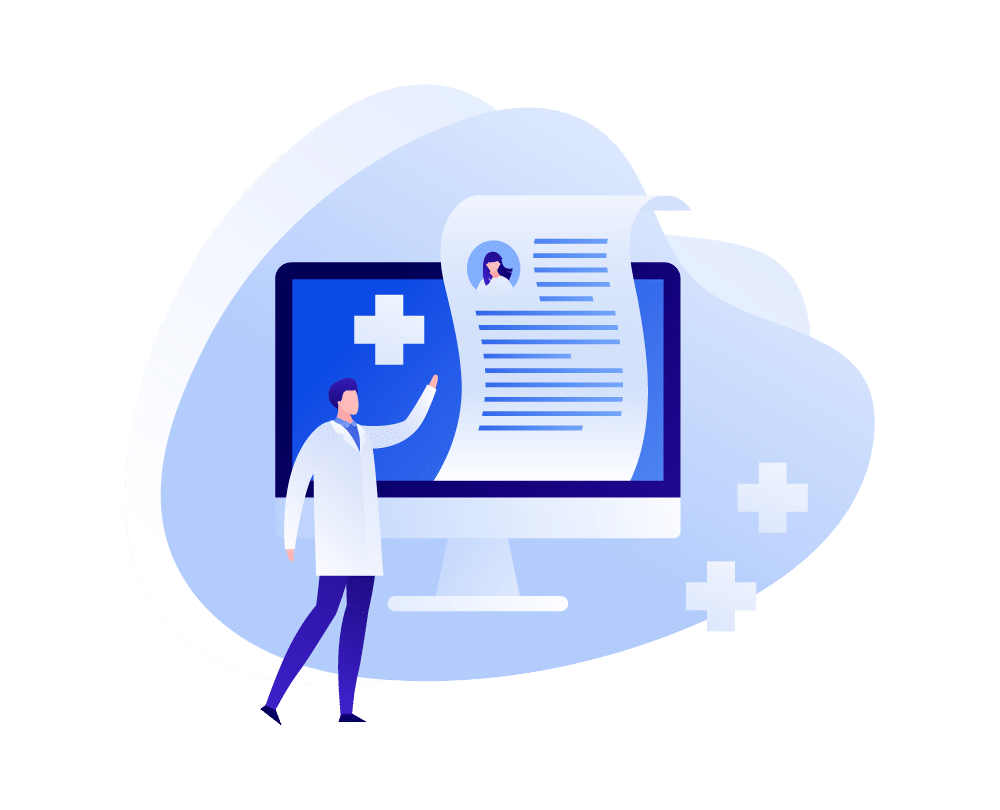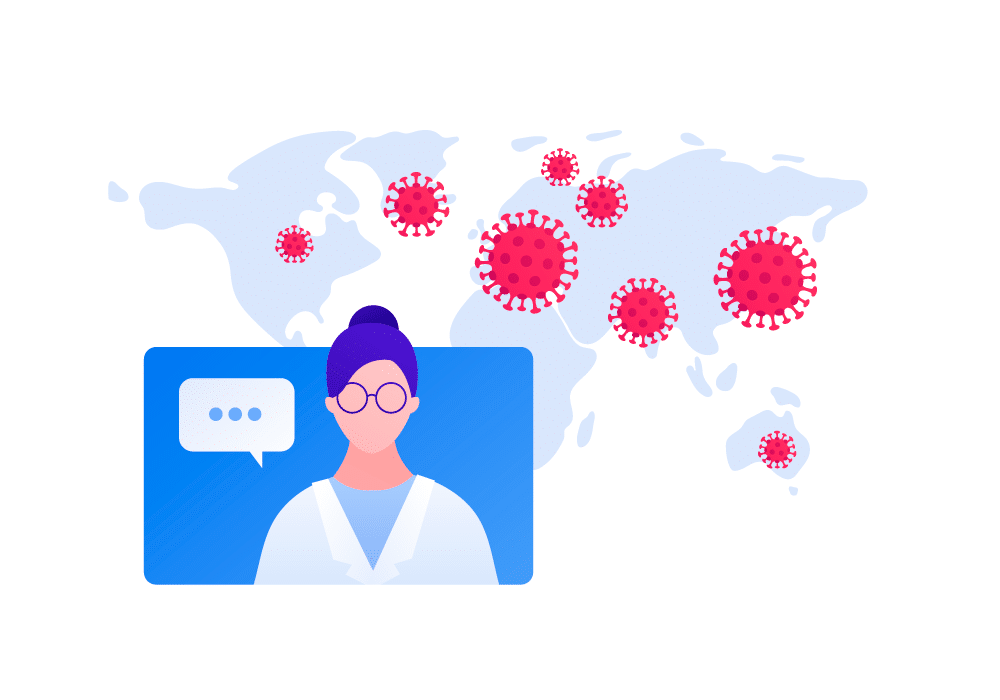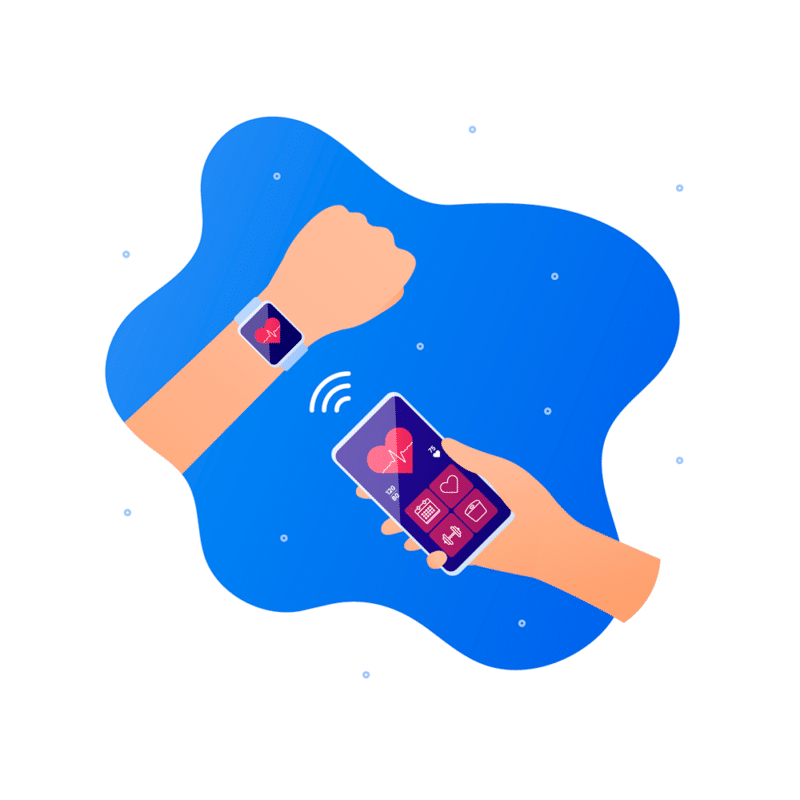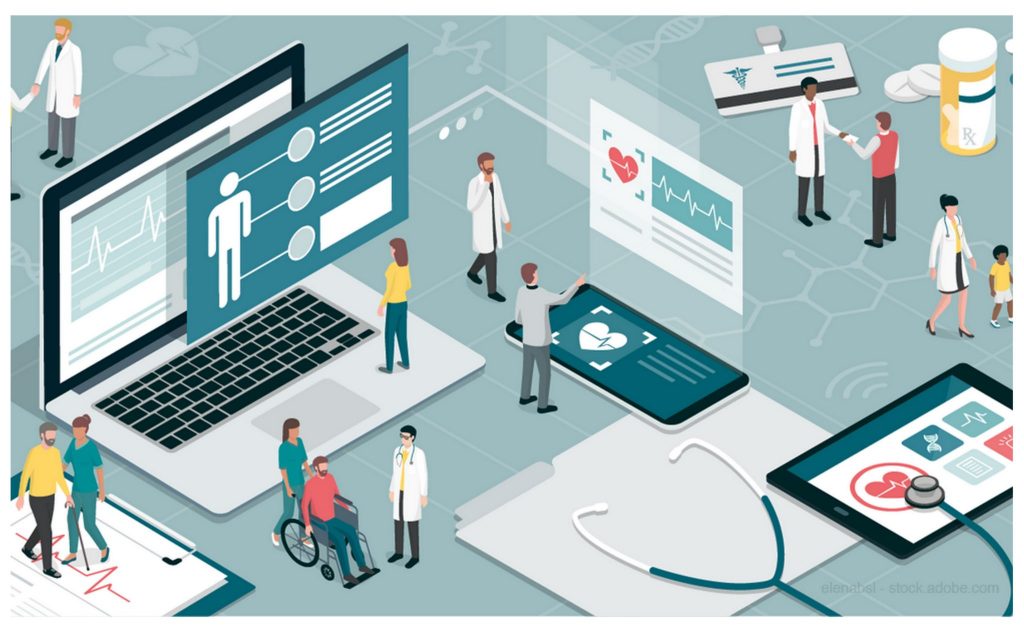In the last year, marked by the rapid spread of COVID-19, it has become clear that healthcare management needs to undergo some technological development. As the number of people in need of medical treatment increased rapidly, medical facilities began to intensively implement new software platforms and expand the functionality of existing solutions. Despite the workload, healthcare facilities have been and continue to be obliged to provide high-quality treatment, monitor patients’ condition, record, manage and, last but not least, keep their data private in accordance with legislative requirements. However, such an amount of information cannot be processed or checked manually. Healthcare facilities therefore had to start implementing innovative tools, creating eHealth.
During the pandemic, existing digital tools, apps and technological trends began to transform and expand their functionality in the healthcare industry. They are expected to become increasingly integrated in all medical organizations in the near future.
Technological trends in healthcare
Although these technological trends described below have not yet been widely implemented in medical devices, they are, given the current situation, a necessity. It is time to consider integrating modern digital tools into hospitals for highly qualified diagnostics and treatment.
Telemedicine
Due to the pandemic situation and the associated limitation of interpersonal contact, most hospitals began to organize treatment and provide remote care. As it is still not possible to completely prevent risk groups from coming into contact with the virus, healthcare facilities have felt the need to introduce more personal technologies that would allow people to take better care of their health during the pandemic.
Healthcare professionals have expanded the provision of care into a virtual space, thanks to which even patients who could not come in person were given access to quality treatment. During quarantine, such patients may remotely ask a medical facility that supports telemedicine for psychological assistance, counseling or health monitoring. Medical facilities must be sure that the services provided remotely are also of high quality, efficient, safe and usable for patients of all ages. The visit to the doctor via telemedicine must be as similar as possible to the personal one.
The growth of telemedicine is likely to continue after the end of the pandemic. According to Medical Economics, 71% of patients in the United States considered using telemedicine at the beginning of the pandemic and 50% of them have used a virtual doctor in the past.
Artificial intelligence
In an effort to cope with the large number of patients and the shortage of doctors, healthcare organizations have begun to implement artificial intelligence (AI) technology to automate certain processes, such as sending data to an electronic health record using NLP (Natural Language Processing) – automated processing of common language, which means that the software understands written or spoken human language.

Apps with the use of artificial intelligence in the medical field serve, for example, as virtual assistants. They remind the patient to take their medicine or help diagnose a disease. They can also be used as therapists. In addition, such AI-based chatbots provide recommendations for care and checking of symptoms – they are something like “pocket doctors”. Chatbots know how to make work easier for doctors by acting as:
- Sorting systems (e.g. care for patients with easily diagnosed problems, recurrent/chronic needs, physiotherapy issues, directing patients to the right specialist based on their symptoms)
- Medical assistants (e.g. help doctors recognize drug interactions, choose appropriate drugs for pregnant and breastfeeding women, suggest possible diagnoses of patients)
According to Accenture analysis, artificial intelligence (AI) technology applied in healthcare can save the US economy up to $150 billion a year.

Although chatbots are important helpers, the future of AI lies primarily in precision medicine, genomics (genetics) and drug discovery. Using pattern recognition, physicians can prescribe individual treatment plans tailored to the patient’s genetic makeup and lifestyle.
In addition, pharmaceutical and biotechnology companies use machine learning algorithms to shorten the drug development cycle. Recently, researchers in the United States have developed AI that accurately detects and diagnoses the presence of COVID-19 based solely on the sound of coughing – even in asymptomatic patients.
Like, what you’re reading?
Subscribe to our newsletter and keep track of the latest technological trends
Artificial intelligence against COVID-19
Artificial intelligence also plays an important role in the fight against COVID-19, including areas such as pandemic detection, vaccine development, thermal screening, face recognition with a mask and CT analysis.
Pandemic detection
BlueDot, an app developed by a company in Toronto, Canada, has been a major pioneer in early warning systems to identify pandemics, including COVID-19. BlueDot published its analysis in 2019, in which they were the first to predict the spread of COVID-19 worldwide.

BlueDot scans more than 100,000 media sources worldwide in more than 65 different languages every day and detects dangerous outbreaks in near real time. The following threat vectors are analyzed to predict the risk of a pandemic:
- Insect and animal populations
- Global and regional climatic conditions
- Flight data and schedules around the world
- Capacity of health systems
- Vaccine development
Thermal screening
AI can quickly analyze many people at once using non-contact infrared thermometers to identify people with fever. This can help identify symptomatic individuals.
Face recognition with mask
Machine learning systems in the field of facial recognition have improved to such an extent that they can identify individuals in masks with an accuracy of up to 95%.
Analysis of CT scans
Human error is a common problem when analyzing CT images. The advantage of artificial intelligence is that pneumonia caused by COVID-19 is detected by machine learning.
AR & VR
Virtual reality (VR) and augmented reality (AR) technologies are often used to educate doctors and nurses. The virtual training course allows future or current doctors to simulate stressful situations, thanks to which they are then better prepared for any circumstances. Due to frequent cases of pneumonia, VR is also used to analyze lung scans, which can assess the percentage of damage in a particular patient.
VR technology is also currently used to develop new treatment options, such as AR surgery or the treatment of neurological and mental disorders with VR/AR.
As can be seen from the worldwide success of Pokémon GO, augmented reality (AR) has the potential to get people with a sedentary lifestyle to engage in physical activity. Gamification (use of gaming and motivational elements outside the gaming industry) through AR and VR has become part of many programs for weight loss and prevention of cardiovascular diseases, as well as for physical therapy and rehabilitation.

Apps, wearables, monitoring solutions
Devices and mobile apps play a crucial role in monitoring and preventing chronic diseases. The combination of the development of IoT (Internet of Things) with telemedicine technologies created the Internet of Medical Things (IoMT).
The management and treatment of chronic diseases accounts for about 80% of healthcare costs. Self-monitoring solutions for patients with chronic diseases therefore have the potential to save a lot of money that can be used more efficiently.
Self-monitoring apps take many forms, but the most promising are wearable devices. Heart rate sensors, training bracelets, blood sugar meters and oximeters that monitor the amount of oxygen in the blood – the “wearable market” allows people to take better care of their own health.
In November 2019, Germany approved a law on digital care, which allows doctors to prescribe medical apps to patients, which are then reimbursed by health insurance companies. In this way, doctors entrust health care more into the hands of patients themselves and begin to build more responsibility for themselves in them.

In conclusion
Every piece of software, even the one used in medicine, needs constant updating. Now is the right time to invest in digital health. Through new technologies and innovations, we are able to improve digital healthcare products and services, thereby improving the quality of life of millions of people.



